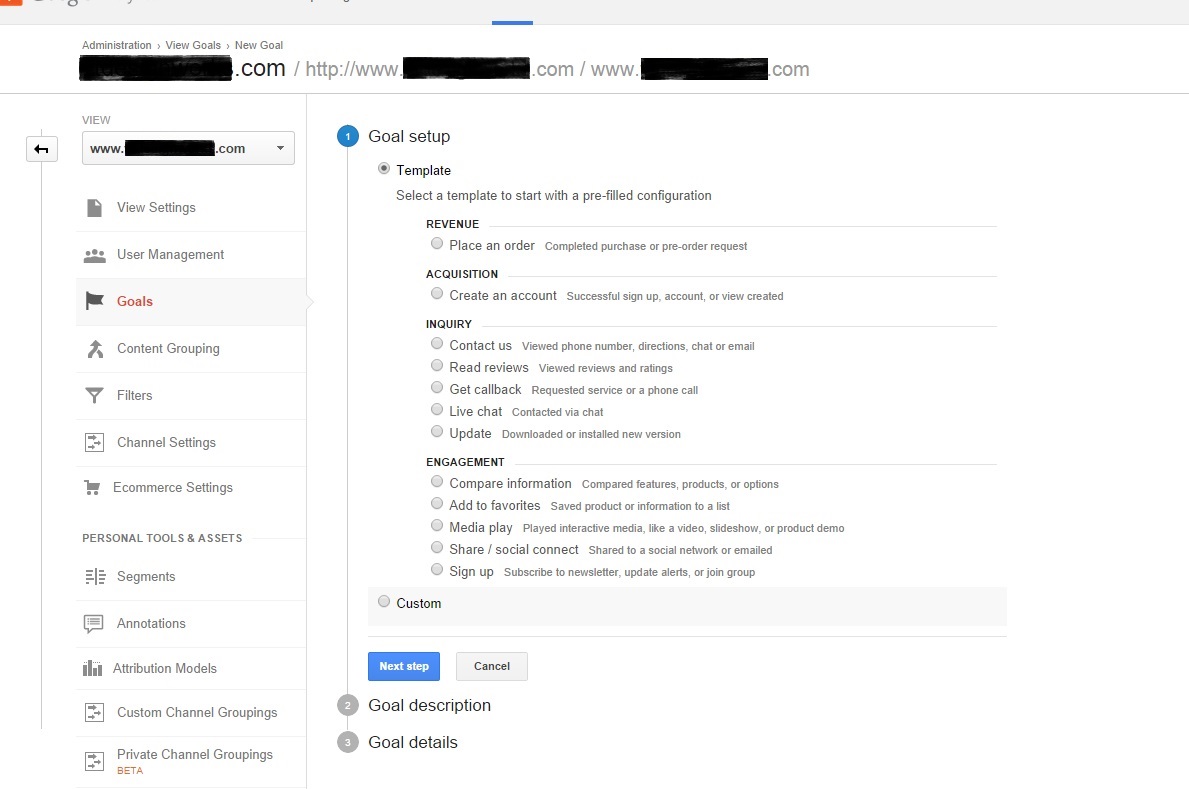Discover the Limitations of Google Analytics Goals: Unveiling the Data Kind That Remain Untrackable
As services increasingly rely on data-driven decision-making, recognizing the restrictions of devices like Google Analytics comes to be paramount. While Google Analytics Goals deal beneficial insights into user interactions, there exist data kinds that thwart tracking, presenting difficulties to a detailed understanding of user actions.
Incomplete User Journey Tracking
Incomplete user trip monitoring within Google Analytics can prevent the capacity to precisely assess customer behavior. When the user journey is not totally tracked, there are voids in the data that avoid a detailed understanding of exactly how customers connect with a site. This lack of insight can lead to missed opportunities for optimization and enhancements to the user experience.
One common issue with incomplete individual journey monitoring is the lack of ability to see the complete path that customers take previously finishing a goal or leaving the site. Without this details, it is testing to identify where users may be coming across barriers or rubbing points that prevent them from transforming. Furthermore, incomplete tracking can obscure the influence of particular marketing efforts or web site adjustments on customer habits.
To resolve this limitation, it is critical to set up correct tracking devices within Google Analytics to capture the whole user trip. This might entail establishing event tracking, goal funnels, or making use of tools like Google Tag Manager to make sure that no essential communications go unrecorded. By gaining a detailed sight of the customer trip, website proprietors can make more enlightened decisions to improve individual interaction and drive conversions.
Acknowledgment Obstacles
Browsing through attribution difficulties in Google Analytics requires an extensive understanding of how different touchpoints contribute to the total conversion procedure. Acknowledgment obstacles emerge from the complexity of modern-day client trips, where users communicate with multiple channels before transforming.
One typical acknowledgment difficulty is the trouble in associating conversions to the correct resource, especially in situations where individuals communicate with numerous networks before transforming. Additionally, cross-device tracking poses an additional attribution difficulty, as individuals frequently change in between tools during their journey, making it testing to track their interactions effortlessly.
Offline Conversions
Offered the challenges connected with associating conversions properly in online networks, the dimension of offline conversions offers a considerable chance for online marketers looking for a much more extensive understanding of their customers' trip. Offline conversions describe actions that clients take in the physical globe, such as making acquisitions in brick-and-mortar stores or over the phone, going to events, or engaging with printed products - what data is google analytics goals unable to track. These conversions are essential for organizations that operate both online and offline, as they offer valuable understandings right into the performance of advertising and marketing projects across various touchpoints
Tracking offline conversions commonly postured a considerable challenge for marketing professionals, as it was challenging to connect these actions back to specific on-line communications precisely. Nevertheless, with improvements in technology, such as the assimilation of CRM systems, special identifiers, and coupon codes, organizations can now link the gap in between online and offline information to gain an extra holistic sight of consumer habits. By try these out properly measuring offline conversions, online marketers can maximize their techniques, designate resources a lot more successfully, and ultimately enhance the total client experience.
Cross-Device Tracking
Cross-device tracking plays a critical role in comprehending the interconnected nature of customers' digital communications across several tools. In today's omnichannel world, where individuals seamlessly change in between smart devices, desktop computers, and tablet computers, tracking their actions throughout these devices is crucial for marketing experts to gain a thorough view of their client journey.

In addition, privacy problems and laws such as GDPR and CCPA have additionally challenging cross-device tracking. With users demanding more control over their information and raised restrictions on tracking modern technologies, marketers need to discover innovative and privacy-compliant ways to connect customer communications across devices.
Dynamic Material Engagement
Recognizing customer engagement with dynamic content is pivotal in maximizing digital advertising and marketing techniques for boosted target market interaction. Dynamic material describes website elements that transform based on individual actions, choices, or various other elements, supplying a tailored experience. Tracking individual communications with vibrant content presents challenges for standard analytics tools like Google Analytics.
While Google Analytics can track fundamental communications like clicks and web page views, it might have a hard time to catch even more nuanced interactions within vibrant content. what data is google analytics goals unable to track. Metrics such as time invested in specific dynamic elements, hover actions, click here for more or interactions within pop-ups are often not easily quantifiable making use of basic tracking approaches. visit the site This constraint prevents marketers' ability to totally comprehend exactly how customers are involving with vibrant content and customize their approaches accordingly

Final Thought
To conclude, Google Analytics objectives have constraints in tracking incomplete customer journeys, associating conversions accurately, capturing offline conversions, tracking cross-device interactions, and measuring vibrant content interaction. These restraints highlight the relevance of discovering additional monitoring approaches and devices to acquire a much more comprehensive understanding of individual behavior and conversions past what Google Analytics can offer.
While Google Analytics Goals deal useful understandings right into customer interactions, there exist information kinds that avoid tracking, presenting challenges to a thorough understanding of customer habits.Insufficient user trip monitoring within Google Analytics can impede the capacity to properly evaluate customer behavior. When the individual trip is not totally tracked, there are voids in the data that prevent a thorough understanding of just how individuals engage with a website.One typical issue with incomplete individual journey monitoring is the inability to see the complete path that users take in the past finishing an objective or leaving the site. By obtaining a comprehensive view of the user journey, internet site owners can make even more informed decisions to enhance individual involvement and drive conversions.